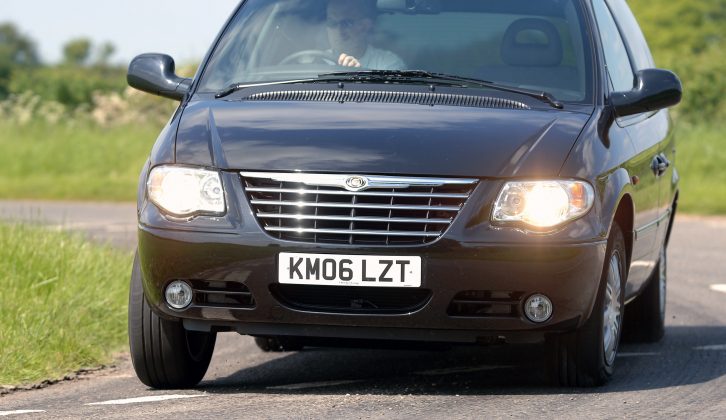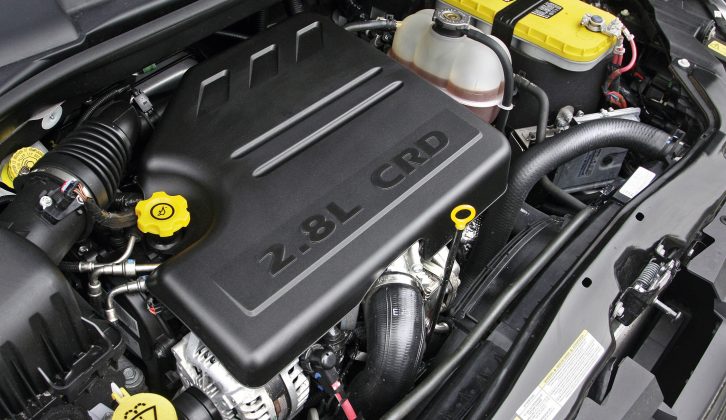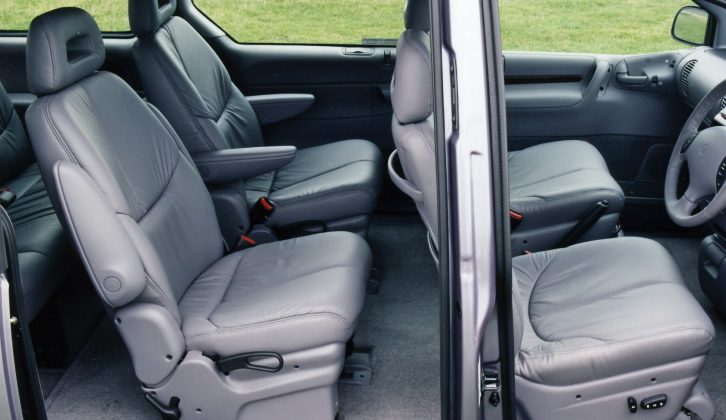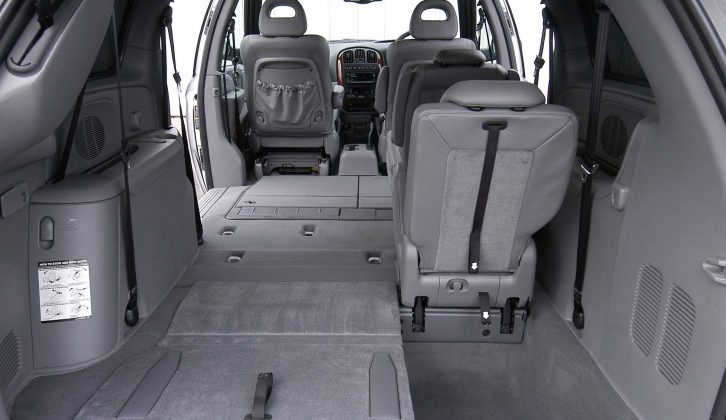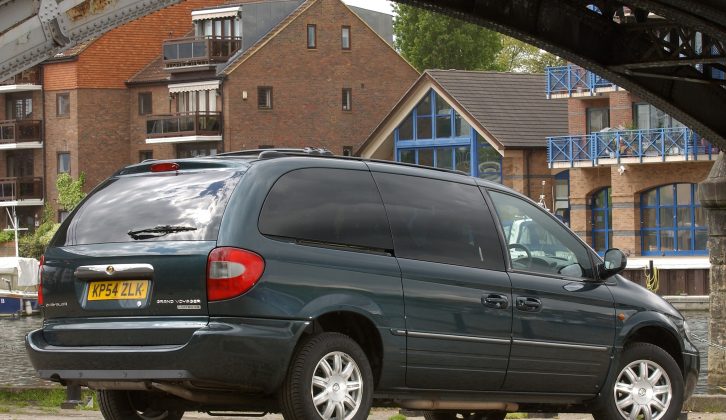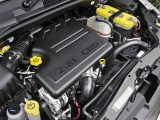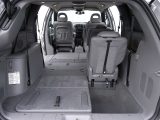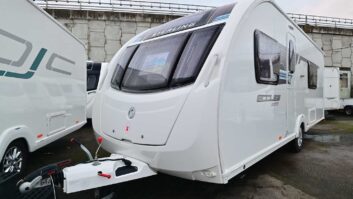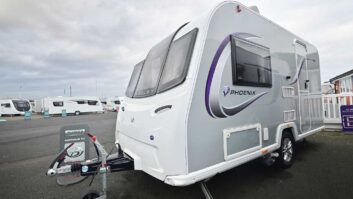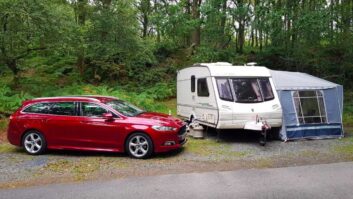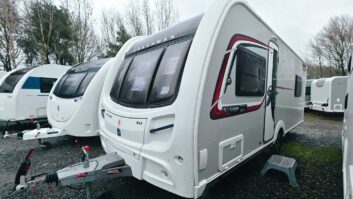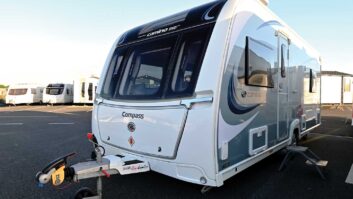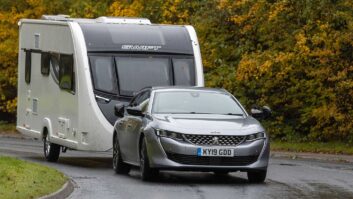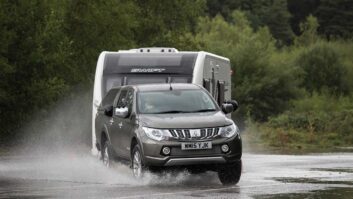Offering a lot of space for not much money, the Chrysler Voyager quickly found fans when it arrived in Europe in 1997. Unfortunately that model, built in Austria, was unrefined, underpowered and scored just two stars in NCAP crash tests. In a tough market Chrysler had to do better, so four years later came a heavily revised Voyager family.
Apart from a nose and tail job they looked similar, and still came with seven full-sized seats, but under the skin was a 20% stiffer structure. There was also more standard kit, better materials and a new set of more powerful and efficient engines. Larger brakes were also appreciated by buyers of earlier Voyagers.
Their bulk and family-friendly nature marked out the Voyager and longer Chrysler Grand Voyager as tow car material, but how do they measure up as bargain-basement tugs 13 years down the line?
Launched in March 2001, the second European Voyager came in two sizes: extra-large and the Grand, which was almost a foot longer. Despite that extra length, the Grand was surprisingly just 35kg heavier, but it was still only equipped with the larger of the two petrol engines. They were a 2.4-litre 145bhp four-pot and a 172bhp 3.3 V6. The latter, though thirsty, is smooth and torquey.
The diesel was a 140bhp/230lb ft torque turbocharged version of the VM Motori ‘four’ also found in Jeep’s Cherokee. That and the 2.4 could only be had with a five-speed manual gearbox, while the 3.3 petrol came with a four-speed auto.
Voyagers were further revised in April 2004. The V6 was available only in the Grand and the diesel was replaced by a more refined 2.8-litre unit with 150bhp and 265lb ft of torque, plus it could be had with the four-speed auto. Other changes were projector headlamps, curtain airbags, more soundproofing and – for the Grand – optional powered sliding doors and tailgate, and ‘Stow ’n’ Go’ seating that meant all the rear seats folded flat into the floor; in other models you had to remove them. The V6 was dropped at the end of 2005, so most Chrysler Voyagers are diesels even though the 2.4 remained listed.
There’s no shortage of kit: all had ABS, air-con and remote central locking. Specs vary wildly, but LX is a popular choice that offers such niceties as power-adjustable leather seats, alloy wheels and a trip computer.
As a rule electrics give the most trouble, so check that everything works when looking round a prospective purchase. Air-con problems are common, and if the demister fails it’s a £2000 fix. On high-spec models, ensure that the electric tailgate and doors still work, and that the latter operate smoothly because runners are prone to wear. Window motors are £200+, so try them all out.
Manual gearboxes suffer from weak synchromesh, particularly when coupled to torquey diesels. Beware of an obstructive or crunchy gearchange. Autos are tougher but prone to fluid leaks, which are easy to fix but can lead to problems if ignored. During changes, if you notice any thump as a gear engages, or a brief rise in revs, problems are developing.
For longevity, it’s important that the diesels’ 12,000-mile oil changes have been adhered to, and all can suffer head-gasket failure, so check for signs of oil contamination in the coolant. On diesels, anything other than smooth running is a bad sign. It can either indicate failing injectors, which are costly, or electrical issues, which can take time and patience to diagnose.
V6s need a cambelt at five-year or 60,000-mile intervals; check if and when that was done and budget £400-£500 if it’s needed.
Voyagers are big, so scrapes are common – particularly to the rear – but you shouldn’t find any rust; if you do, walk away and find a better car. A good Chrysler Voyager will take some searching for because many have led hard lives either with large families or as cabs.
Verdict
At 1600kg, the Voyager’s towing limit is lower than you’d expect for such a big car. But if it suits, and you buy carefully, for little money you’ll get a versatile MPV that is stable and tows well, as long as you avoid steep hills.
We think the Chrysler Grand Voyager 2.8 CRD Limited auto is the daddy of all Voyagers and it’s our pick of the range. New, they sold for a £4500 premium over the LX; that same amount is about what you’ll now pay for a good ’un.
The one we’d avoid is the Voyager 2.4. Compared with what else is on offer, the smaller petrol engine has little to offer as a tow car – it can even be laboured with a full set of passengers on board.
What you need to know
Petrol Voyagers with a tenuous grip on life can be had for less than a grand, with perhaps another £500 needed to start playing with diesels. A sensible entry level to ownership would be nearer the £2500-£3000 mark.
For that money, you should be able to find something with less than silly mileage and decent history. Pay £4000 upwards for the really good stuff, with final-year low-miler 2.8 CRDs fetching up around the £6500 mark – which still isn’t a lot of money for what you’re getting.
Here are some useful figures (for a 2006 Voyager 2.8 CRD LX auto):
- Kerbweight 2085kg
- 85% match 1772kg
- Towing limit 1600kg
- Towball limit 80kg
If you’re looking to hitch up and head off on tour, how much will it cost to fit a towball to a Voyager/Grand Voyager? We got quotes from PF Jones who said that a Witter flange towbar will cost £133.61, while it’s £221.62 for a Westfalia detachable towbar, fitting extra. And what about servicing costs? Servicing Stop gave us a quote of £112.50 for an interim service and £184.50 for a full service, for all Voyager and Grand Voyager models.
For little money you’ll get a versatile MPV that is stable and tows well
